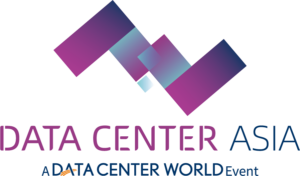Data center architecture is the structured design of a facility’s IT and support infrastructure, covering how servers, storage, networking, power, and cooling systems are organized and integrated to ensure performance, scalability, reliability, and security. It defines both the physical layout (such as racks, cabling, and airflow) and the logical framework (such as network topology, virtualization, and workload distribution), with the goal of supporting continuous operations, efficient resource use, and future growth of digital services.
Join Data Center Asia Indonesia 2025 at Jakarta International Expo Kemayoran (17–18 Sep) to explore cloud, AI, and sustainable data center solutions: secure your spot as a visitor today!

What are the Three Main Components for a Data Center?
A data center fundamentally consists of three critical components:
- Servers (Compute Layer): These are the processing units that handle applications, data processing, and workloads. They range from standard x86 servers to high-performance GPUs for AI or HPC tasks.
- Storage (Data Layer): This includes all persistent storage systems such as SAN (Storage Area Networks), NAS (Network-Attached Storage), or object storage. Storage must balance performance, redundancy, and scalability based on workload needs.
- Networking (Connectivity Layer): Networking interconnects servers, storage, and external endpoints. It includes switches, routers, firewalls, and load balancers, ensuring low-latency, high-throughput, and reliable communication.
What are the Core Principles of Data Center Architecture?
Modern data center architecture is built on five core principles to ensure reliability, efficiency, and scalability:
- Redundancy: To prevent single points of failure, critical components like power supplies, cooling systems, and network links are duplicated. This ensures that if one component fails, a backup can take over without interrupting service.
- Scalability: The architecture must be designed to grow easily. It should allow for the addition of more servers, storage, or networking equipment without major disruptions to the existing infrastructure.
- High Availability: This principle focuses on maximizing uptime. By implementing redundant systems and efficient management, data centers aim for near-continuous operation, often measured by “nines” (e.g., 99.999% uptime).
- Efficiency: This involves optimizing power usage and cooling to reduce operational costs and environmental impact. Modern data centers use techniques like hot and cold aisle containment and free cooling to improve efficiency.
- Security: This includes both physical and digital security. Physical security protects the facility from unauthorized access, while digital security safeguards the data and network from cyber threats.
What Does 3-Tier Architecture Mean?
The 3-tier architecture is a classic data center design that organizes the network into three distinct layers:
- Core Layer: The highest-speed layer, designed for high-performance routing and switching to the internet and other networks.
- Aggregation/Distribution Layer: This layer aggregates traffic from the access layer and provides policy-based connectivity and filtering.
- Access Layer: The lowest layer, where all servers and end devices connect to the network.
While this model is a foundational concept, many modern data centers have moved toward a more agile spine-and-leaf architecture to reduce latency and improve east-west traffic flow, which is critical for cloud and virtualized environments.
How to Design the Data Center Architecture for AI ?
Designing data center architecture for AI requires addressing the unique demands of AI workloads. This includes deploying:
- Compute-Intensive Hardware: GPU/TPU clusters for AI training and inference.
- High-Performance Storage: NVMe or parallel file systems for large datasets.
- Low-Latency Networking: High-speed interconnects like InfiniBand or 100G+ Ethernet for distributed AI workloads.
- Scalability: Ability to expand clusters as AI workloads grow.
- Power & Cooling Considerations: AI servers generate more heat; efficient cooling is critical.
How to Design the Data Center Architecture For Cloud Computing?
For cloud computing, data center architecture must prioritize flexibility, efficiency, and multi-tenancy. This can involves:
- Virtualization & Containerization: Maximizes hardware utilization and multi-tenancy.
- Elastic Scaling: Auto-scaling of resources to meet dynamic workloads.
- Resilient Storage Solutions: Distributed storage for redundancy and high availability.
- Automation & Orchestration: Tools like Kubernetes, OpenStack, or cloud management platforms.
- Energy Efficiency & Cost Optimization: Optimized PUE (Power Usage Effectiveness) to minimize operational costs.
Join Center Asia Indonesia 2025 to Learn the Latest Data Center Development!
Data Center Asia Indonesia 2025, taking place on 17-18 September at Jakarta International Expo Kemayoran, is Southeast Asia’s premier platform for data center, cloud, and digital transformation industries, co-located with Electric & Power Indonesia.
Designed for CIOs, CTOs, cloud specialists, data center professionals, and energy sector stakeholders, the event offers over 50 high-level summit sessions, 100+ exhibiting companies, and 1,000 sqm of exhibition space, providing unparalleled networking opportunities, practical insights, and innovative solutions to drive Indonesia’s digital and energy transformation.
